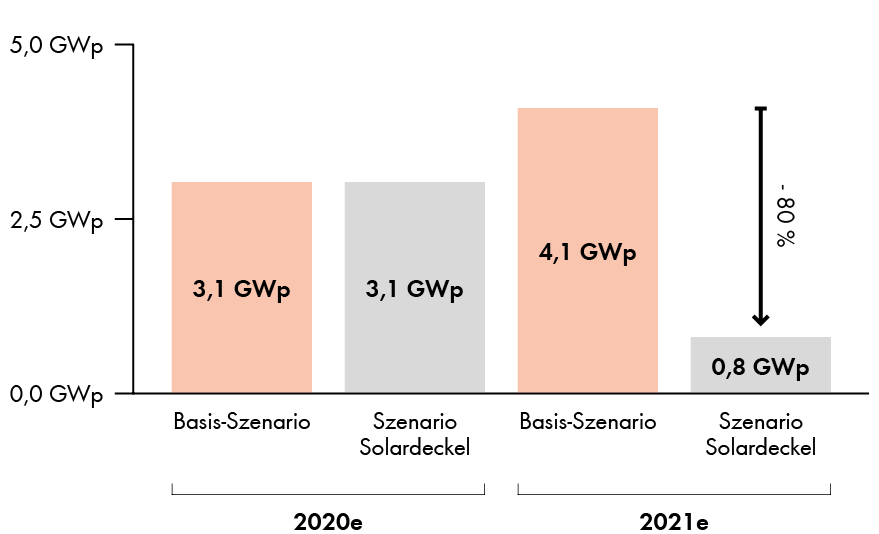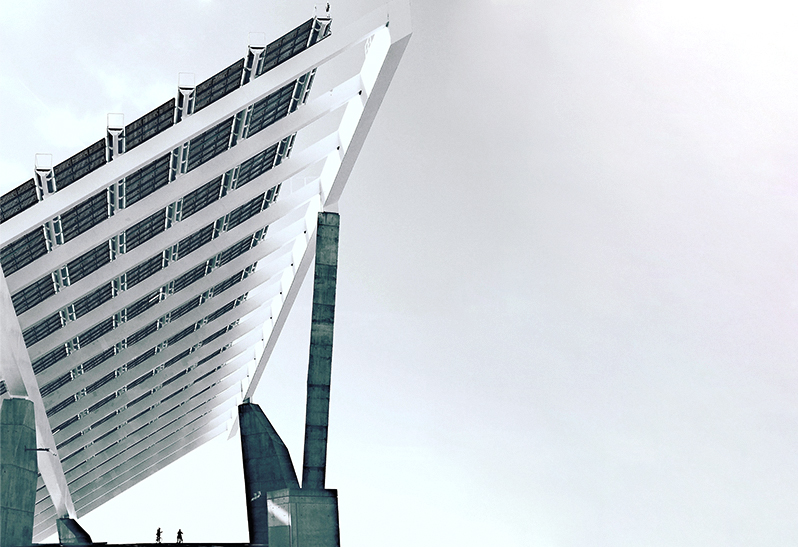The Exciting Case of the PV Cap

When, as an outsider, you look at the case of the PV cap (also known as the “52-gigawatt cap”) in more detail, you can only wonder about the politicians who spent so much time implementing a clear legislative proposal that thwarts climate policy. Reason enough, therefore, to take a closer look at the story behind the rise and fall of the PV cap.
The “52-gigawatt cap” essentially means that PV systems with an output of up to 750 kW will no longer be eligible for a subsidy (i.e., feed-in tariff) when they achieve a total installed power of 52 gigawatts. This limit was agreed upon in the amended Renewable Energy Sources Act (EEG) in 2012. Shockingly, as at the beginning of July 2020, just under 1.5 gigawatts were left until this limit was reached, meaning that the end of the subsidies and the associated collapse in sales in the photovoltaics industry could occur by the end of July.
But in contrast to what was promised in the climate package unveiled in September 2019, the German Federal Government gave itself until July 3, 2020 – i.e., five to midnight – to abolish the cap and so is responding, it would appear, only under massive pressure from the solar industry, which even threatened to lodge a constitutional appeal.
Someone who can tell us how and why the situation was allowed to escalate to this extent and contextualize the cap in the grand scheme of things is Eric Quiring, who, as the Public Affairs Specialist for SMA, monitors the political goings-on in Berlin and has a hotline to various industry associations.
Can you tell us in layman’s terms what the PV cap is all about and how it was allowed to be imposed in the first place?
Eric Quiring: As its name suggests, it’s essentially a cap on subsidies for PV systems. The limit of 52 gigawatts was decided back in 2012 by Peter Altmaier, the then Federal Minister for the Environment, Nature Conservation and Nuclear Safety, on the basis of assumptions at the time concerning price trends in the photovoltaics industry and climate policy considerations.
The fact that this limit was no longer fit for purpose has been obvious for some time now, which is why the cap was abolished last year in the 2030 climate protection plan. After all, the consensus is that we cannot ensure supply reliability for much longer without renewable energies.
Why do you think it had to be abolished?
EQ: The energy transition has made considerable advances since the introduction of the cap. Our power consumption has increased, our utility grids have become more flexible and the spotlight is increasingly on climate protection. To stick with this limit would be to ignore the reality in which we live. In addition, early customers were hesitant to invest in a renewable energy supply for fear of reaching the limit as early as the following month.
How can you explain the fact that the decision was not taken until the very last minute, not only causing huge uncertainty for an entire industry but also forcing it to endure a tangibly reduced desire among customers to invest?
EQ: That is certainly a tricky issue.To find an answer to the question, you have to ask what interests drive these processes and what the motives behind them might be.
There has always traditionally been conflict among the various providers of energy supply technology, the conflict being what form the energy supply of the future should take. Should it be centralized and fossil-fuel-based or decentralized and based largely on renewable energies? Each group has its own interest in increasing its share in the energy mix.It is in the interests of those who support a centralized, fossil-fuel-based energy supply that renewables do not become too dominant. The result is that the solar industry is effectively held hostage, to put it in terms used by the media in recent weeks.
This phrase illustrates the absurd situation that wind and solar energy cannot be used where they would actually be best suited and are instead played off against each other by supporters of fossil fuels with highly bureaucratic restrictions on expansion. The process of finding a compromise between wind and solar has sapped a lot of time and energy.This is paradoxical when you consider that both these forms of energy generation are renewable and that we need a lot more of them. It was clear here that those responsible were playing for time as a way of instilling anxiety in the renewable energy sector.
What has SMA got to do with this decision?
EQ: SMA supports renewable energies by helping to make them a sustainable and economically viable energy supply concept. Political considerations are playing an ever greater role. With our expertise and for the benefit of our customers, we want to be part of the discussion. I’ll give you a little example: It takes time for us to receive orders and ship products to our customers. The installation engineers also need time to do their job. The customer then has one month in which to register their system. We keep an eye on this entire process, which is why it was important to us to explain that the 52-gigawatt cap should be abolished sooner rather than later to prevent any stifling of the solar industry. So anyone who planned a system in May and ordered the components did not know whether they would still be entitled to a subsidy for their installation in August.
Why is this decision so important for the solar industry?
EQ: It means that the German solar industry once again benefits from planning security on the road toward achieving the targeted 98 GW of PV power by 2030. This is one of many steps aimed at combining climate policy measures with a sustainable economy.
Who will benefit most from the decision and how do they position themselves? I’m talking about manufacturers, commercial users and private users.
EQ: We will all benefit, because more solar energy will help us achieve the 65% target and bring about the necessary reduction in greenhouse gases to ensure that our planet remains livable. The economic potential from this will benefit the PV systems that will continue to receive subsidies – namely those smaller than 750 kWp. Since commercial roof-mounted systems are often more expensive than ground-based ones, the latter are more likely to reap the benefits if they sell their electricity directly. The good news for private customers who not only generate electricity for self-consumption but also feed their surplus electricity into the utility grid is that they will continue to be paid for their electricity.
In your view, is it enough that the PV cap has been abolished, or do you believe that further action is necessary when it comes to subsidies for photovoltaics? And what form should any such action take?
EQ: The solar cap was really just a relic of bygone days that was dragged into the present, inhibiting any expansion. To achieve the 65% target, we have to do a lot more than simply ridding ourselves of inherited burdens. We have to be more active in the urban realm and integrate solar power in rental concepts so that everyone can benefit from affordable energy. There are reputable studies1 stating that we have to increase the volume annually from 2.5 GB to at least 10 GB. It is every bit as crucial that people who use their own electricity and do not feed any into the utility grid do not have to pay grid levies.
In any case, the amendment to the Renewable Energy Sources Act (EEG), which is already being planned for 2020, offers just the right framework for bringing about the next steps.
Thanks a lot for the informative conversation!




